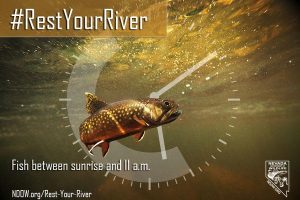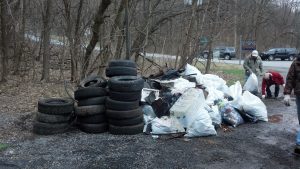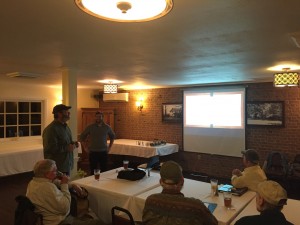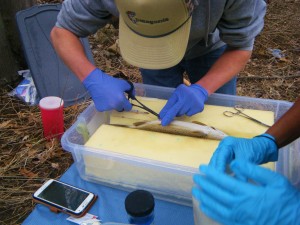Meeting of the Little Juniata River Association – October 14, 2014
Our October meeting was held, for the first time, at the Edgewater Inn and Riverside Grill, Alexandria PA. This magnificent facility was purchased recently by Keith Beamer and his wife Sarah. Many of you know Keith as a member of the Habitat management team for the Pennsylvania Fish and Boat Commission. He participated in several of our bank stabilization/trout habitat projects in the upper river from 2010 to 2013. Sarah is the former science teacher for Grier School and headed up the Trout In the Classroom program at Grier School last year. LJRA partnered with Sarah on this very successful program. Both Keith and Sarah are LJRA Life Members and they recently signed their new business up as our first corporate member. Sarah and Keith have invited the LJRA to hold all our meetings in their beautiful facility. In addition to fine dining, they offer a full “Bar and Grill” menu! Finally, we have a great place for our “after the meeting drink”
There were approximately 23 officers/directors, members and guests in attendance. President Bill Anderson welcomed us and opened the meeting. Keith formally welcomed us as well.
Summary of LJRA Trout Mortality Presentation
Our guest speakers for October were Mark Nale, Bob Carline, and Mark Jackson. They gave a presentation on the methodology and preliminary results of a study on bait-hooked trout mortality. The study was conducted during the April 2014 Trout Tournament held on Bald Eagle Creek, Centre County.
Participants could use any tackle but had to keep the fish alive and turn them in to tournament officials who interviewed the anglers regarding the circumstances of their catch. All fish caught were held in a hatchery run for nine days monitoring their health each day.
There were 490 trout, all species, caught during the two day event, with 87% of the fish caught using bait. Of these, 26 died. This represented 5.5% of the bait caught trout – a much lower mortality than that reported from most prior studies. Most trout which died did so on the day caught. Less than one percent of the fish which died did so during the nine day holding period.
A discussion followed with questions such as whether or not there have been such studies on mortality of bait caught wild trout, what about mortality with circle hooks, and whether or not (given the study results), it was yet a good idea to limit certain areas of the rivers and streams to fly fishing or lure fishing only. A thought to consider being that opening all waters would create more friends for the waterways-an important consideration given present day challenges.
President Anderson pointed out that historic objections to the use of live bait on the Little Juniata had more to do with the fear of invasive species introduction (from bait buckets) than with trout mortality.
The study will be repeated in 2015.
THE EFFORT TO REMOVE BROWNS FROM BELLS GAP RUN
On November 19th there will be electroshocking done on a 2 mile stretch of Bells Gap Run. An effort will be made to eliminate the burgeoning numbers of brown trout, which threaten the viability of the native brook trout population. The Bells Gap Run Reservoir will be drained and brown trout removed next year.
WHERE DO THE TROUT GO?
LJRA will fund a telemetry study to be conducted by PSU/Juniata College in 2015 to try to determine (among other things) where the Little Juniata River trout go during hot weather/low water periods.
SPRING CLEANUP
We will once again conduct our LJRA spring clean-up. The date chosen is Saturday, March 28th, 2015. This will be the 10th anniversary of this annual event.
Fall Float BOAT CLEANUP
A very successful cleanup by water craft and some bank walkers was held on October 4, 2014. Total weight of trash/junk gathered was .5 tons. The April 5, 2014 water craft cleanup yielded .5 tons and the October 2013 effort yielded 1.5 tons! Nice. Lunch for all participants was provided at Green Hills Camp. John Corr was project leader for this worthy LJRA effort


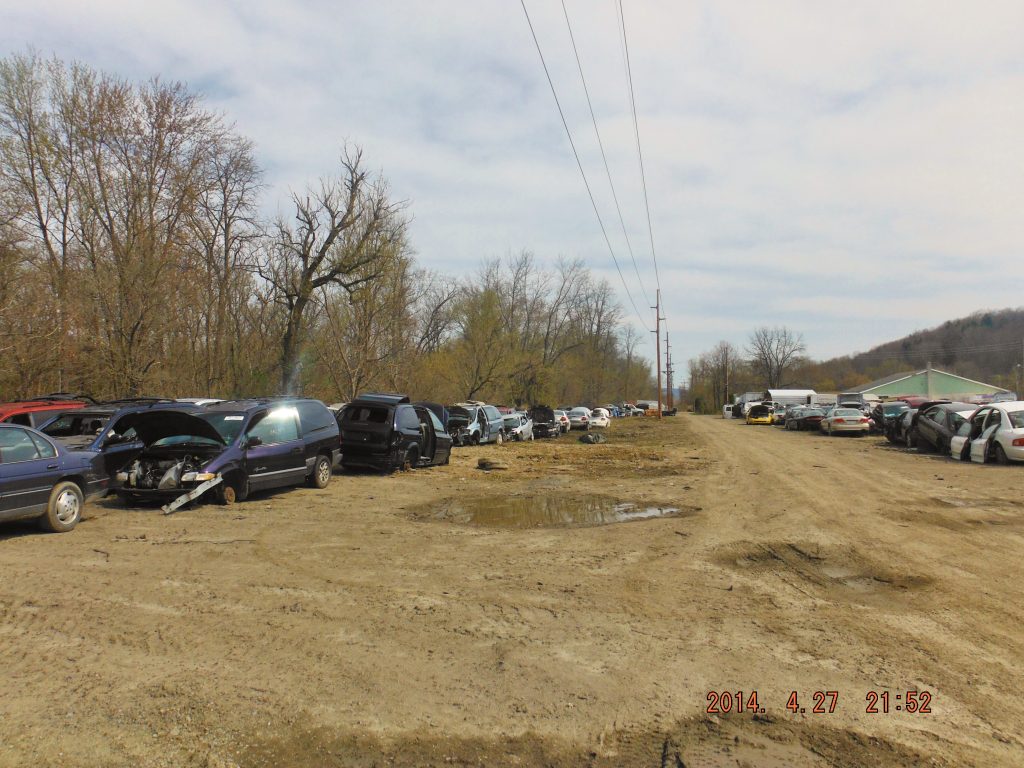
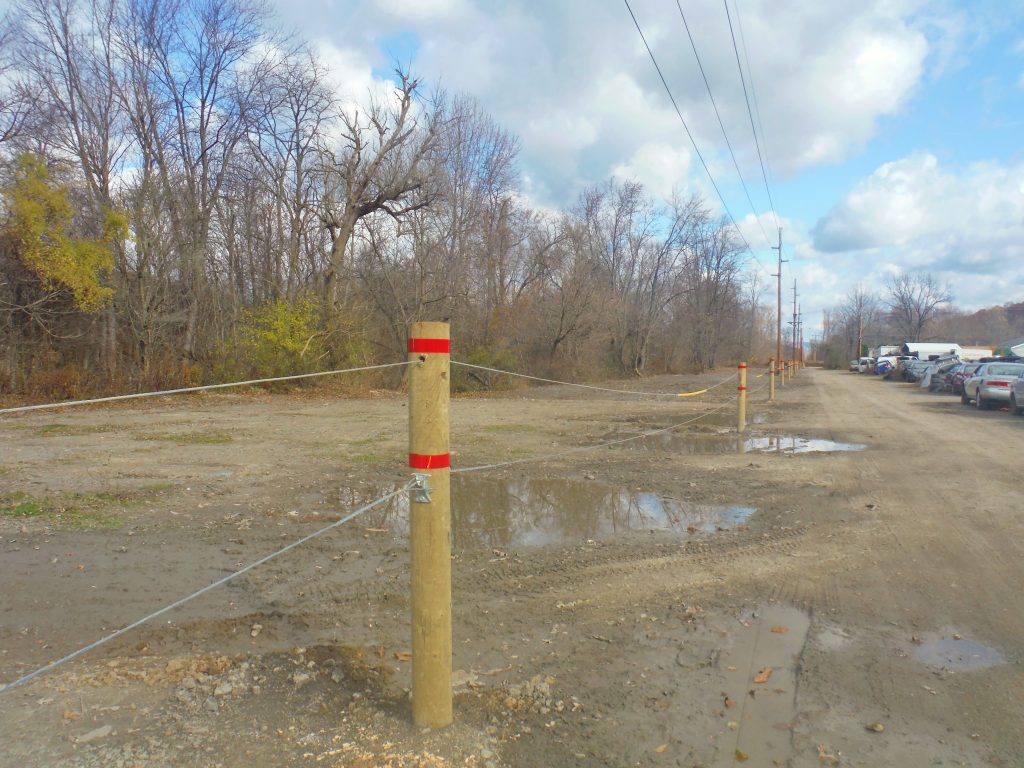
 This spring was diverted as a source of water for the Tyrone paper mill since 1935. In August 2016, American Eagle Paper Co agreed to free it at its source, located 2 miles upstream from their pump house in Tyrone. Director Carl Reed and Bill Anderson visited the spring and walked its path to the river. It is now providing much needed 50 degree cold water for an additional 2 miles of the upper J! Kudos to American Eagle Paper Co.
This spring was diverted as a source of water for the Tyrone paper mill since 1935. In August 2016, American Eagle Paper Co agreed to free it at its source, located 2 miles upstream from their pump house in Tyrone. Director Carl Reed and Bill Anderson visited the spring and walked its path to the river. It is now providing much needed 50 degree cold water for an additional 2 miles of the upper J! Kudos to American Eagle Paper Co.